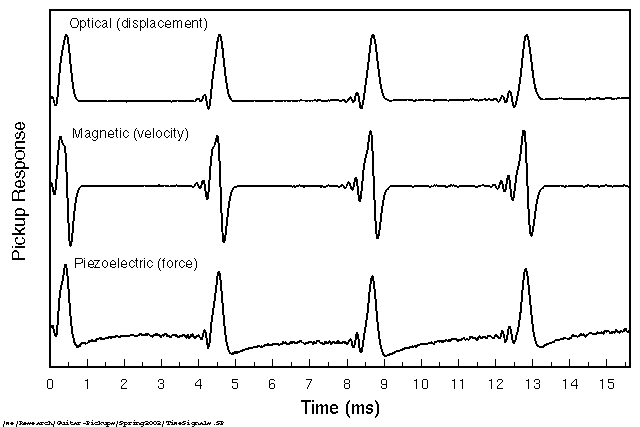|
Research Summary
Electric guitars produce sound not because the instrument's vibration results in acoustic radiation, but because the vibration of
the strings is converted to an electrical signal which is amplified and sent to a loudspeaker. The transducers which convert the
string vibration to electrical signals in most electric guitars are magnetic pickups which measure the string velocity according to
Faraday's Law of electromagnetic induction. While magnetic pickups are the norm, there are other methods of detecting the string
motion. Optical pickups use a small beam of infrared light to detect the position of the string and thus measure the string's
displacement as a function of time. Piezoelectric pickups in the bridge of the guitar measure the force the strings exert on the
bridge. This research project is investigating the differences in the signals measured by each of these three pickups
(magnetic=velocity, optical=displacement, piezoelectric=force) with application to the uses of different types of pickups and differences
in the sound quality they produce. Since the time signals are very different, the frequency content is also noticeably distinct
for the various pickups. |
 Comparing the time signals obtained by using an optical pickup (top); magnetic pickup (middle);
and piezoelectric force pickup (bottom).
Comparing the time signals obtained by using an optical pickup (top); magnetic pickup (middle);
and piezoelectric force pickup (bottom).
|
 Physics of Guitar Pickups
Physics of Guitar Pickups
 Daniel A. Russell, Ph.D.
Daniel A. Russell, Ph.D.